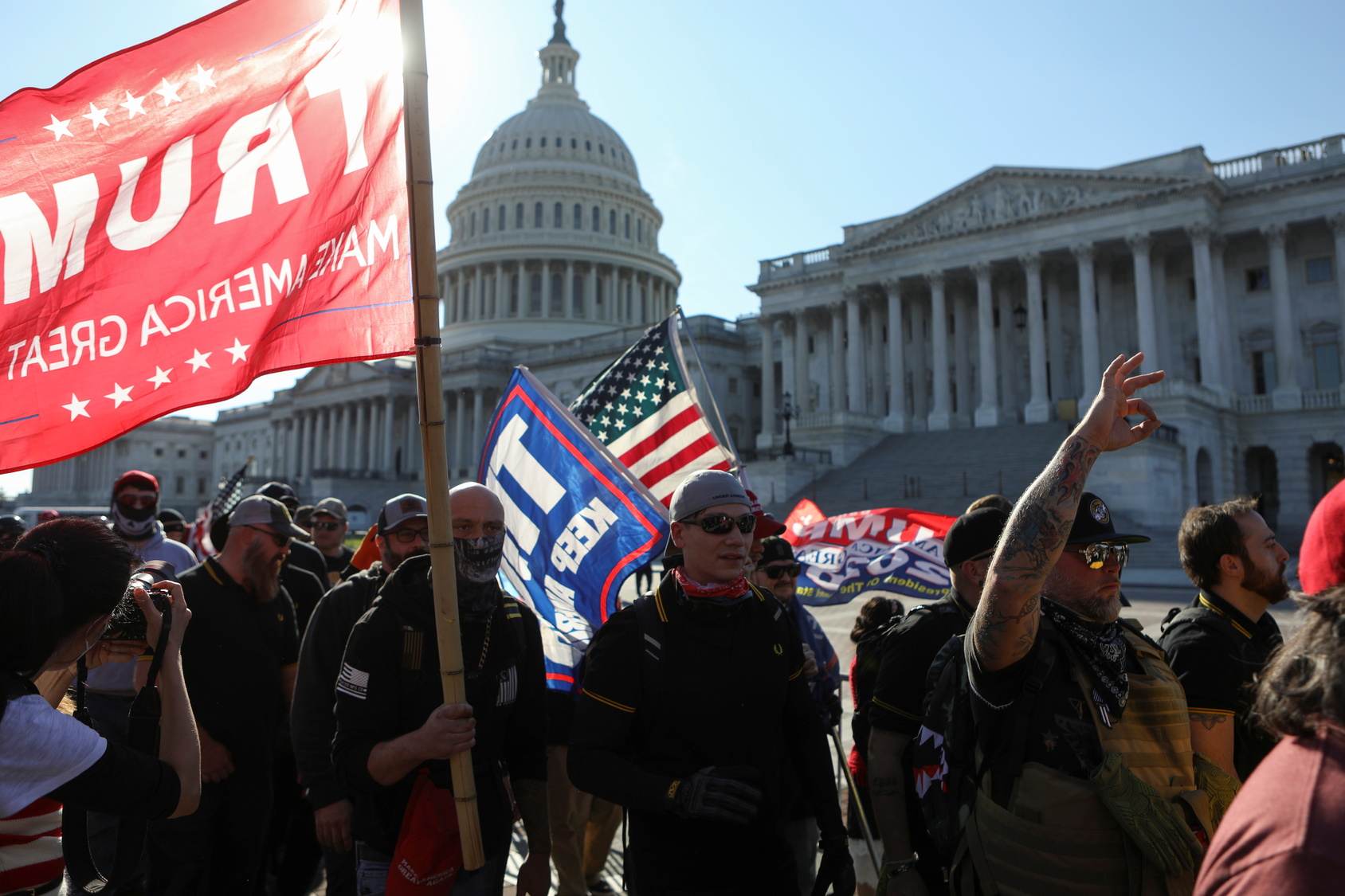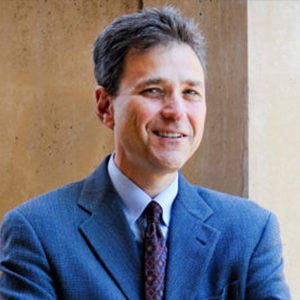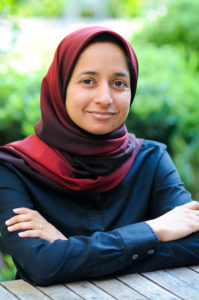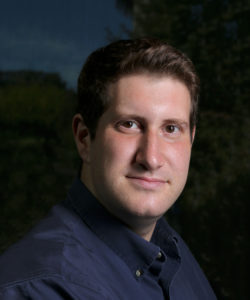When Rioters Stormed the U.S. Capitol: Stanford Law Faculty on Criminal Liability, Hate Groups, History, and More
On Wednesday, January 6, American democracy was shaken to its core when rioters stormed the Capitol, forcing members of the Senate to evacuate, and halting the Constitutionally required certification process of the Electoral College—the largely ceremonial act before inauguration of the new president. Earlier in the morning, the outgoing President Trump continued to incite his supporters at a rally with false claims of election fraud and a stolen second term in office. That rally soon turned violent, as rioters broke through barriers, scaled the steps to and the walls of the Capitol building, and broke into the seat of American government—leaving at least one person dead and the country and world stunned. Here, Stanford Law faculty members David Sklansky, Shirin Sinnar, and Greg Ablavsky discuss these historic events—and what may happen next.

Criminal Law Professor David A. Sklansky on President Trump’s liability for his support of rioting, and the criminal charges those Trump supporters can face:
The president called his supporters to the Capitol to protest his loss of a free and fair election. Is there any legal liability for the president for what happened today?
Sklansky: Trump’s statements in the weeks, days, and hours leading up to Wednesday’s storming of the Capitol—culminating with statements like “They’re not going to take this White House,” “We will never concede,” “You don’t concede there’s theft involved”—were like throwing matches onto a gasoline spill. Not only did the President egg the rioters on, he made clear on Twitter afterward that he was on their side–calling them “great patriots,” excusing their lawlessness, and urging them to “remember this day forever.”

But the First Amendment protects even wildly irresponsible speech unless it is calculated to produce imminent lawlessness. Incitement needs to be pretty explicit and direct to satisfy that test. Winks and nods aren’t enough. Neither are statements of support after the fact. So the criminal liability of President Trump for Wednesday’s riot isn’t clear.
So the president’s calls to his supporters to fight a fair election may not be prosecutable—but are they impeachable?
Sklansky: Exactly, those calls may not be prosecutable, because they may not have been sufficiently explicit about encouraging violence. But there is a strong and straightforward argument for treating Trump’s words and conduct over the past several weeks, and especially on Wednesday, as grounds for impeachment. The standard for impeachment is “high crimes and misdemeanors,” which a term of art meaning, essentially, abuse of power. And it is hard to think of a clearer violation of office, or a more dangerous abdication of duty, than refusing to acknowledge the result of an election voting you out of office, encouraging your supporters to prevent the lawful transfer of power, and congratulating them for their violent efforts to do just that.
Regarding the protesters who turned violent—those who stormed the Capitol building. Can they be prosecuted? If yes, what charges might the face?
Sklansky: They absolutely can be prosecuted. It’s a felony to enter the floor of either House of Congress by force and violence. It’s a felony to assault a federal official, like an officer of the Capitol Police. It’s a felony to intimidate, impede, or interfere with federal officials, like members of Congress, engaged in their lawful duties, like the counting of electoral votes. And it’s a felony to conspire to seize federal property by force, or to conspire to use force to obstruct the carrying out of any federal law.
National Security Expert Professor Shirin Sinnar on hate groups, militias, and why the U.S. Capitol security fell so quickly:
Do we know much about the people who turned the protest into a violent riot at the Capitol today? And how would you describe that violence? Some are describing today’s events as an insurrection.

Sinnar: The protestors who flocked to Washington, D.C., are a mix of unaffiliated Trump supporters and members of far-right militant groups, like the Proud Boys, a self-described “western chauvinist” group, and the Oath Keepers, a 25,000-member paramilitary organization whose ranks include many military veterans and law enforcement officials.
An insurrection is a violent rebellion against the government. Today’s political violence certainly sought to subvert democratic governance, but it came at the behest of the President, who has pushed demonstrably false claims of voting fraud in an attempt to overturn the election. Trump’s message to the Proud Boys during the fall presidential debates—to “stand back and stand by”—authorized the kind of violence we saw today. His response after it occurred—“these are the things and events that happen when a sacred landslide election victory” is “stripped away from great patriots”—further legitimized it. So this violence isn’t unconnected to the state; it’s been licensed by the president.
It’s important to question the labels we use and the frameworks they support, even in a legitimate effort to stigmatize and respond to lawless behavior. Many political leaders and commentators called those who stormed the Capitol “domestic terrorists.” Yes, the use or threat of force to influence government policy meets academic and legal definitions of terrorism. But the unaccountable and racialized framework of terrorism laws needs to be ratcheted down, not ratcheted up. If history is any guide, it is black and brown communities, and activists who challenge the existing racial or socioeconomic order, who stand to suffer most from the expansion of “domestic terrorism” laws.
Has there been an increase of white nationalist and hate group activity? Is that tracked and documented?
Sinnar: Government agencies have pointed to a growing threat of white nationalist violence for some time now. In September, the Department of Homeland Security labeled white supremacists the most significant terrorist threat among “domestic violent extremists.” In 2020, armed right-wing paramilitary groups—sometimes described as “militias,” though they act outside government authority—protested COVID-19 restrictions and over a dozen members were charged in connection with plots to kidnap the governor of Michigan and storm the Michigan capitol.
That said, it’s problematic to blame the events in Washington, D.C., on a small group of “extremists.” A much larger group of people, including leaders of the Republican Party, enabled it.
Given that Trump has been falsely denying the election results and perhaps even inciting violence, are you surprised that the Capitol police were so unprepared for today’s violence?
Sinnar: The violence came as no surprise, but the fact that “protestors” could so easily access the Capitol—and remain there for hours—is stunning. The government response is striking in light of the massive surveillance and violence deployed on racial justice protestors last year, including by the National Guard, in cities across the United States. While law enforcement officials say they didn’t want to respond to election protestors with an overt military presence, no such respect for free expression or democratic legitimacy characterized the response to protests against police brutality, especially at the federal level.
Legal history Professor Gregory Ablavsky on the historical relevance of the storming of the Capitol building and popular sovereignty:

Is there a historical equivalent to what happened today?
Ablavsky: Clearly, what happened today is pretty extraordinary, especially in recent American history, and many people have said how they felt that it seemed like a foreign country. But if you look at U.S. history broadly, you see quite a few “rebellions” in which armed groups proclaimed themselves the true and legitimate source of governance—“self-created” bodies, as their opponents denounced them. Early American history is rife with such revolts: events like Shays’s Rebellion and the Whiskey Rebellion of the 1790s, or the Dorr Rebellion of the 1840s. And, of course, the most violent and widespread rebellion of all, Southern secession. In that sense, perhaps, it was appropriate that many of the invaders were carrying Confederate flags.
But I actually think one of the best analogies to today’s events is something that I taught my students about recently: the Wilmington Massacre or Coup of 1898. That year, Wilmington, North Carolina duly elected a Fusionist government of both Black and whites. But white supremacists deemed that new government illegitimate, denouncing what they called “Negro Rule.” They violently overthrew the government, killed as many as sixty people (almost all Black), and forced the local government to resign, installing their chosen candidates in their place.
Fortunately, unlike in Wilmington, today’s coup attempt does not seem to have succeeded. But it does demonstrate a similar insistence on the right to overthrow a duly elected government based on a self-appointed group’s faith in their own exclusive legitimacy.
Can you talk about popular sovereignty and how it was twisted or perverted today?
Ablavsky: U.S. governance is predicated on popular sovereignty—the idea that legitimate authority is derived from the people. Elections represent perhaps the most fundamental expression of popular sovereignty: the idea that a majority of the people decide on government.
But there has always been another, more direct conception of popular sovereignty: the idea that the people should “speak” directly through popular action. This conception can be, and has been, a powerful force for positive change—think, for instance, of the civil rights or women’s suffrage movements. But this idea, especially taken to mean that the people have the literal right to command, can also be remarkably dangerous. Throughout U.S. history, groups have anointed themselves as the truest representatives of the people and then demanded the right to rule. As the Wilmington example suggests, this has often been bound up with race, and leveraged to try to exclude or dispossess people of color from democratic participation.
There is, of course, a deep irony to the idea of invoking “the people” to protest an election that represents the clearest indication of the national popular will. But it is not a new irony.
How “unprecedented” were today’s events?
Ablavsky: As with so much of the Trump Presidency, there’s been a tendency to proclaim what happened as “unprecedented.” Set against recent U.S. political history, it is—the President has flagrantly flouted so many of the practices, rules, and norms that evolved especially over the twentieth century that were thought to constitute American democracy.
But if you look earlier, to the eighteenth and nineteenth centuries, today’s events look sadly familiar—demonization, intense polarization, and violence were all a frequent part of politics. Much of that was because the United States was trying to figure out how democratic governance should work. But we’ve long forgotten—or, maybe more aptly, erased–many of these aspects of U.S. political history, in part because much of the violence and disenfranchisement was directed against immigrants, enslaved people, Native communities, free Blacks, and others who were disempowered.
It took tremendous effort and sacrifice—often by these groups themselves—to try to achieve aspects of democracy we now take for granted: near-universal franchise, rule of law, restraints on state power and violence. Obviously, these are still incomplete projects, but events like those today remind us how valuable, and fragile, these achievements are.

